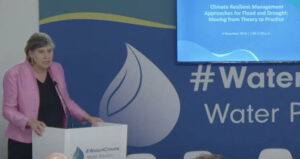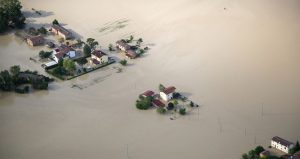Southern Europe is a hotspot for growing climate risks

-
 Fergal MacErlean
Fergal MacErlean
Share article:
Southern Europe is a high risk area for multiple climate risks in contrast to the EU’s administrative heartlands. Portugal, Spain, Italy, Greece, and neighbouring Member States are particularly at risk from wildfires and impacts of heat and water scarcity on agricultural production. Many densely populated cities in Europe’s low-lying coastal regions are prone to flooding, erosion and saltwater intrusion.
Speaking at the presentation of the inaugural European Climate Risk Assessment earlier this Spring the European Environment Agency (EEA) chief Leena Ylä-Mononen said: “Our new analysis shows that Europe faces urgent climate risks that are growing faster than our societal preparedness. To ensure the resilience of our societies, European and national policymakers must act now to reduce climate risks both by rapid emission cuts and by strong adaptation policies and actions.”
Europe is not prepared for climate risks
The March-published European Climate Risk Assessment (EUCRA) has been constructed to help identify policy priorities for climate change adaptation and for climate-sensitive sectors. According to the assessment, Europe’s policies and adaptation actions are not keeping pace with the ever-rapidly growing risks. In many cases, the report states, incremental adaptation will not be sufficient and, the report adds, urgent action is required now to tackle certain risks which are not yet critical.
Strategic policymaking needed
The 40-page document builds on and complements the existing knowledge base on climate impacts and risks for Europe, including recent reports by the Intergovernmental Panel on Climate Change, the Copernicus Climate Change Service and the Joint Research Centre of the European Commission, as well as outcomes of EU-funded research and development projects and national climate risk assessments. The knowledge in this first-of-its-kind assessment is synthesised with the aim to support strategic policymaking.
Identification of priorities
This assessment identifies 36 climate risks with potentially severe consequences across Europe, which has the dubious honour of being the world’s fastest-warming continent. The risks are evaluated in the contexts of risk severity, policy decision making, policy readiness and risk ownership. It further identifies priorities for EU policy action, based on a structured risk assessment united with qualitative aspects, such as considering social justice.
Extreme heat in Southern Europe
The EUCRA report warns that for southern Europe, in particular, extreme heat is becoming more frequent while precipitation patterns are changing. Unfortunately, this area is where those, largely Mediterranean countries, can expect considerable declines in overall rainfall and more severe droughts. The assessment adds that these events, combined with environmental and social risk drivers, pose major challenges throughout Europe.
Cascading climate risks
Specifically, the report outlines, how these risks are set to compromise food and water security, energy security and financial stability, and the health of the general population and of outdoor workers. In tandem, climate change is impacting terrestrial, freshwater and marine ecosystems. The scientists who have worked tirelessly to catalogue the dangers have pinpointed the alarming fact that climate change can exacerbate existing risks and crises. The report warns that climate risks can cascade from one system or region to another, including from the outside world to Europe.
Social effects
Cascading climate risks can lead to system-wide challenges affecting whole societies, with vulnerable social groups particularly affected. Examples include mega-droughts leading to water and food insecurity, disruptions of critical infrastructure, and threats to financial markets and stability. When applying the scales of severity used in the European climate risk assessment, several climate risks have already reached critical levels.
Catastrophic damage
The EUCRA report states that ‘if decisive action is not taken now, most climate risks identified could reach critical or catastrophic levels by the end of this century. Hundreds of thousands of people would die from heatwaves, and economic losses from coastal floods alone could exceed € 1 trillion per year’.















